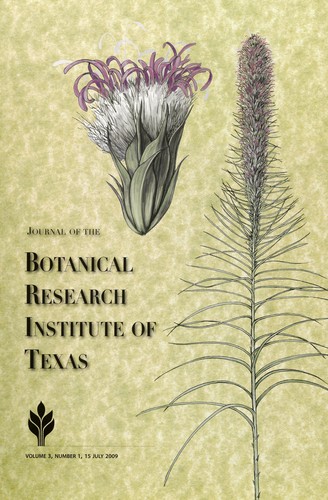Peer-reviewed publications

Abstract
The peyote cactus, Lophophora williamsii, is presently classified as a Schedule 1 Controlled Substance in the USA, with an exemption for use as a sacrament in bona fide religious ceremonies of the Native American Church (NAC). Any botanist or other researcher seeking to work with peyote or any of its alkaloids, must comply with applicable (nontrivial) regulatory requirements. This paper presents an examination of the prohibition efforts that paved the way for current peyote regulation, accompanied by documentation of the religion-based political origins of such efforts, which involved the "acculturation" of Native Americans (i.e., the destruction of American Indian cultures). We also look at the historical emergence of a nationally organized and coordinated effort by missionaries and other prohibitionists to sell a federal anti-peyote law to Congress, which manifested itself repeatedly over a period of more than fifty years, before finally realizing success in the Controlled Substances Act of 1970. In view of ongoing changes in the legal/regulatory status of Cannabis sp. (another Schedule 1 plant that was targeted for illegality during the prohibitionists' rise to political predominance), we compare and contrast the two plants with speculation on peyote's future.

Book chapter
When Cultivation of a Religious Sacrament Equals Manufacturing a Controlled Substance: Effects of the Absence of Adequate Regulatory Structure on the Conservation of Peyote.
Martin Terry, Keeper Trout & Bennie Williams. 2015.
Advances in Environmental Research, 2015, Volume 45, Chapter 3. (Nova Science Publishers) ISBN: 978-1-63483-299-1.
PDF ISBN
We have been unable to obtain a copy of this but it will be added as soon as it becomes possible.
Abstract
While religious peyote use dates back several millennia (Schultes & Hofmann, 1992), the practice of peyotism in the United States is a relatively recent phenomenon. The rise of peyotism, which was traditionally limited to Mexico, Texas, and the Southwest, was intrinsically tied to the rapid and widespread destruction of Native American cultures across the continent in the 19th century (Long, 2000). During this period, tribes from across the country were forced off
their lands onto small reservations, which they often shared with tribes who spoke different languages, had different cultures, and came from very different parts of the United States. While peyotism was unknown to most tribal groups in the early part of the 19th century, the removal of so many disparate tribes to isolated reservations produced circumstances where once remote practices and traditions could be shared and rapidly dispersed among numerous tribal groups. At this critical juncture, when many tribes were facing the loss of land, traditions, and way of life, peyotism surfaced as a way to create social and tribal solidarity among the diverse tribes that had been forced together, and at the same time preserve aspects of Indian culture (Long, 2000). The peyote ritual, just as the Ghost Dance, became a symbol of resistance and helped form the foundation of a pan-Indian movement, a movement that would help create unity among
American tribes against the cultural devastation wrought by European settlers.
The objective of this chapter is to explore and explain the legal bases that currently support the limited religious use of peyote. This chapter consists of four parts. The first part considers the history of peyote prohibition, religious exemptions, and the failed constitutional challenge that led to the current federal exemption; the second focuses on the parameters of the current federal exemption, as laid out in the American Indian Religious Freedom Act Amendments of 1994 (AIRFA), including who is protected, and whether non-recognized Indians may have an Equal Protection claim protecting their religious practices; the third concerns the Religious Freedom Restoration Act of 1993 (RFRA), and examines what the 2006 Supreme Court decision in Gonzalez v. O Centro Espirita Beneficiente Uniao Do Vegetal (Gonzalez v. UDV) means for non-Indian members of the Native American Church and other peyotist
traditions; and finally, the fourth part explores whether the protections offered by AIRFA and RFRA extend to the state level, and if so, to what degree. While the current federal exemption is limited to Indian practitioners of traditional Indian religions, it is my aim to demonstrate that non-recognized Indians1 might successfully seek protection under the statute by bringing an Equal Protection claim, and that all sincere practitioners, Indian and non-Indian alike, should
find federal protection to practice traditional Indian religions under RFRA.

